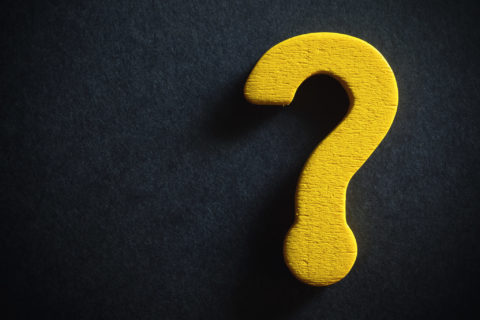The hot-cold empathy gap is the tendency to underestimate how our preferences will change when in either a ‘hot’ or ‘cold’ emotional state:
- A ‘cold’ state is where we are calm, collected, sensible and rational
- A ‘hot’ state is where we are emotional, excited, angry, hungry, in pain or aroused in some way
As our state of mind changes, something we might previously have found unappealing or a good choice might become irresistible or vice versa. There are two types of hot and cold empathy gaps:
- Type 1: Cold-Hot – Moving from a cold state to a hot state; and
- Type 2: Hot-Cold – Moving from a hot to a cold state.
But why do people do this…
We’ve all had the ‘What was I thinking?’ sense of horror and disbelief when we retrospectively (and in a cold state), examine things we did in a hot state. A typical example is the ‘morning-after’ when we vow to ‘never drink again’. Hot-cold empathy gaps also explain why going to the supermarket on an empty stomach (a hot state) can cause us to buy far too much.
Hot-cold empathy gap illustrated:
This same principle applies to mealtimes. Researchers at Carnegie Mellon University recently investigated whether choosing our lunch meal well in advance helps us to eat less.
- In the first experiment, the researchers analysed the lunch orders of 394 employees at a large healthcare company. Employees were able to order their lunch from as early as 7 am up to 30 minutes before they would eat – typically between 11am and 2pm. The analysis showed that employees who ordered their lunch earlier tended to pick meals with fewer calories. For each hour ordered in advance, people’s meal choice included on average 38 fewer calories – that’s equivalent to eating a biscuit.
- In another experiment, university students were offered a free lunch in return for answering a questionnaire. At the end of the survey, they were asked to specify their lunch order. Students completed the survey either right before lunch or a few hours earlier. The results showed that students who had submitted the survey a few hours before lunch chose healthier meals with 100 fewer calories.
Hot states are caused by visceral feelings such as hunger. This means we are more likely to be in a cold state early in the morning if we have just eaten breakfast; i.e. we are still in a cold state when we choose our meal hours before lunch. This allows us to consider the long-term consequences of an unhealthy meal.
However, the longer we go without eating, the more likely we are to be in a hot state. The studies show that we are likely to be in a hot state when choosing our meal right before lunch. This leads us to choose a more indulgent meal, and ignore the negative health consequences. Choosing our meal in advance helps us overcome our hot-cold empathy gap.
A brand that has leveraged
the understanding hot and cold empathy gaps, specifically the cold-to-hot
empathy gap, to help their business, is Starbucks. When Starbucks was
going through its massive expansion, it needed to ensure that the mass influx
of new employees received proper training and provided excellent customer
service. For many of the employees, this was their first job, and they hadn’t
dealt with an angry customer before. In their cool state of mind, they knew how
they should act in such a situation, but as soon as the “heat” was turned up, in
the middle of a busy shift, some found themselves snapping at customers – or at
each other.
To help their employees, Starbucks came up with a simple solution – ‘preloaded
decision-making’. They added an extra page at the end of every employee
handbook which had lines like, “When a customer yells at me I will ______”. The
employee would then write in advance what their response would be to this and
many other tough situations. It
allowed employees to plan their response with a cool mindset, so they didn’t
need to think as much under pressure and risk losing their self-control.
Providing consumers with an understanding of the hot-cold gap can empower them to understand why they struggle to follow through on behavioural intentions.
The examples above are those where making a decision in a cold state helps control and direct behaviour in a hot state. Conversely, decisions made in hot states are typically the not-so-clever ones; the snap email reply to a colleague who has angered you, the impulse purchases made before you checked your bank balance, or deciding to end a relationship in the middle of a row.
Yet, on some occasions we can harness the energy that is contained in a hot state for the better, and commit ourselves to do something good even when we’ve calmed down and transitioned back to a hot state. For example, feeling inspired when watching the Olympics (maybe the hockey, or the diving), we might be temporarily motivated enough to sign up to a local diving club or hockey team – a phenomenon behavioural scientist BJ Fogg calls a ‘motivation wave’. Alternatively, in the pub one night, friends might egg us on to sign up for that first 10km and get us on the road to fitness. Sometimes, hot state decisions can be good things.
So what does this all mean…
This concept is a great example of how context is king and how our behaviour can vary wildly between our hot and cold states of mind. Providing consumers with an understanding of the hot-cold gap can empower them to understand why they struggle to follow through on behavioural intentions. As researchers, being aware of what state of mind a consumer is in is critical, as what you learn in one zone may not carry through to another. Often understanding the interconnection between both states is a wise practice.
NEXT IN THE SERIES: Every three weeks The Behavioural Architects will put another cognitive bias or behavioural economics concept under the spotlight. Our next article features social norms.
www.thebearchitects.com
@thebearchitects
PREVIOUS ARTICLES IN THE SERIES:
System 1 & 2
Heuristics
Optimism bias
Availability bias
Inattentional blindness
Change blindness
Anchoring
Confirmation Bias
Framing
Loss Aversion
Reciprocity


